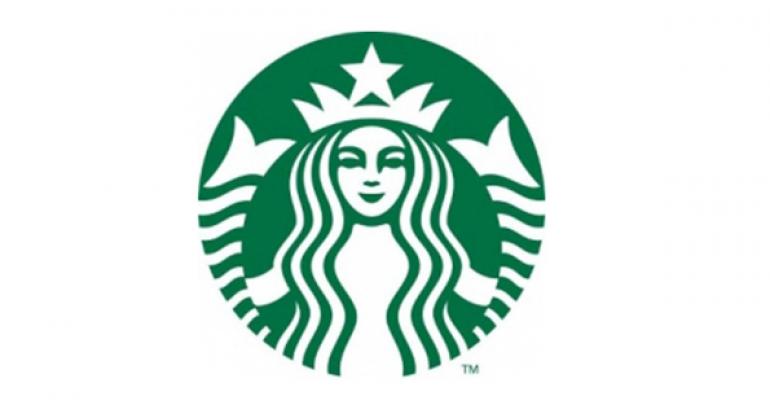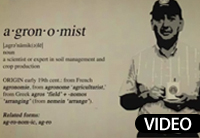Though the Europe, Middle East and Africa region remains a challenge, Starbucks said Thursday plans for expanding its multi-channel loyalty program next month and building its consumer packaged goods business internationally will set the coffee company up for continued growth.
After reporting a 26-percent increase in net income for the March-ended second quarter, Howard Schultz, Starbucks’ chair, president and chief executive, declared in an earnings call with analysts that “Starbucks is as healthy as it ever has been.”
MULTIMEDIA
Starbucks buys coffee farm
RELATED
• Starbucks to extend loyalty program
• Starbucks names Sharon Rothstein global CMO
• More QSR news
Same-store sales among U.S. locations rose 7 percent for the second quarter following a 7-percent increase in the first quarter, which Schultz described as “stunning accomplishments when you look at the backdrop of the economy and what other people are reporting.”
Sales of the featured vanilla spice latte and hazelnut macchiato alone contributed about 2 percentage points to the same-store sales increase during the recent quarter, and those who received holiday gift cards earlier came in to buy more indulgent — and higher priced — drinks, the company said.
“There are a significant number of new customers and new occasions being introduced by Starbucks cards, leading to new daily routines and greater loyalty, all of which bodes well for our future growth,” said Cliff Burrows, Starbucks’ president for the Americas region, who noted that the chain is launching a new Caramel Ribbon Crunch Frappuccino next week.
The company is expecting growth in both the Americas and China/Asia Pacific regions. Starbucks plans to add 3,000 units to the Americas region, including 1,500 in the U.S. over the next five years. This year, the U.S. will see 300 new store openings.
“Anyone suggesting in 2008 or 2009 that Starbucks U.S. retail store portfolio was approaching market saturation was just flat out wrong,” said Schultz, noting that stores open in the past few years are among the best performing in the company’s history.
In the China/Asia Pacific region, same-store sales grew 8 percent during the quarter. China will eventually be Starbucks’ second largest market. The company plans to open 1,500 stores there by 2015.
Bringing channel development to China
Leveraging its growing footprint, the company also plans to bring its consumer packaged goods business — what Starbucks calls channel development — to China, offering Starbucks-branded products to that country’s rapidly growing middle class, Schultz said.
Though China doesn’t have nationwide grocery chains, like the U.S., Schultz said the demand for Starbucks coffee and other products has been growing rapidly there. “We believe very strongly that we can take advantage of that,” he said.
In the U.S., for example, the sale of K-Cup pods has become one of the primary drivers of revenue growth. In China, Schultz said bottled and blended Frappuccinos alone could be a $1 billion business, as it is in the U.S.
Jeff Hansberry, Starbucks’ president of channel development and emerging brands, said the company’s channel development business is still in a nascent stage internationally. “Today, the channel business only operates in about 20 of the 62 countries where Starbucks has retail operations, and we’re working aggressively toward expanding beyond the U.S. with our CPG portfolio,” he said.
Next month, Starbucks is unveiling its cross-channel rewards program, allowing consumers to earn “stars” when they buy packaged coffee or other Starbucks products in grocery and other retail stores. The stars can be redeemed for free food or beverages at Starbucks stores.
With more than 6 million My Starbucks Rewards members currently, Hansberry said the company will be able to reach an audience 10 times larger by tapping those grocery/retail consumers.
The company also expanded its loyalty program to include Teavana purchases. Starbucks’ acquisition of the Teavana tea retail chain was completed and the company opened eight new units during the second quarter.
Meanwhile, same-store sales for the region that includes Europe, the Middle East and Africa, or EMEA, fell 2 percent for the quarter, and company-operated locations saw a 6-percent decline in revenue, compared with a 48-percent increase among licensed units.
The decline in company-store revenue, however, was blamed in part on a refranchising effort in the United Kingdom, where the company plans to move to a franchise and licensed-store model. “We’re confident this will dramatically shift the profitability of the market,” said Michelle Gass, EMEA president.
Starbucks ended the quarter with 18,868 units worldwide.
Contact Lisa Jennings at [email protected].
Follow her on Twitter: @livetodineout


